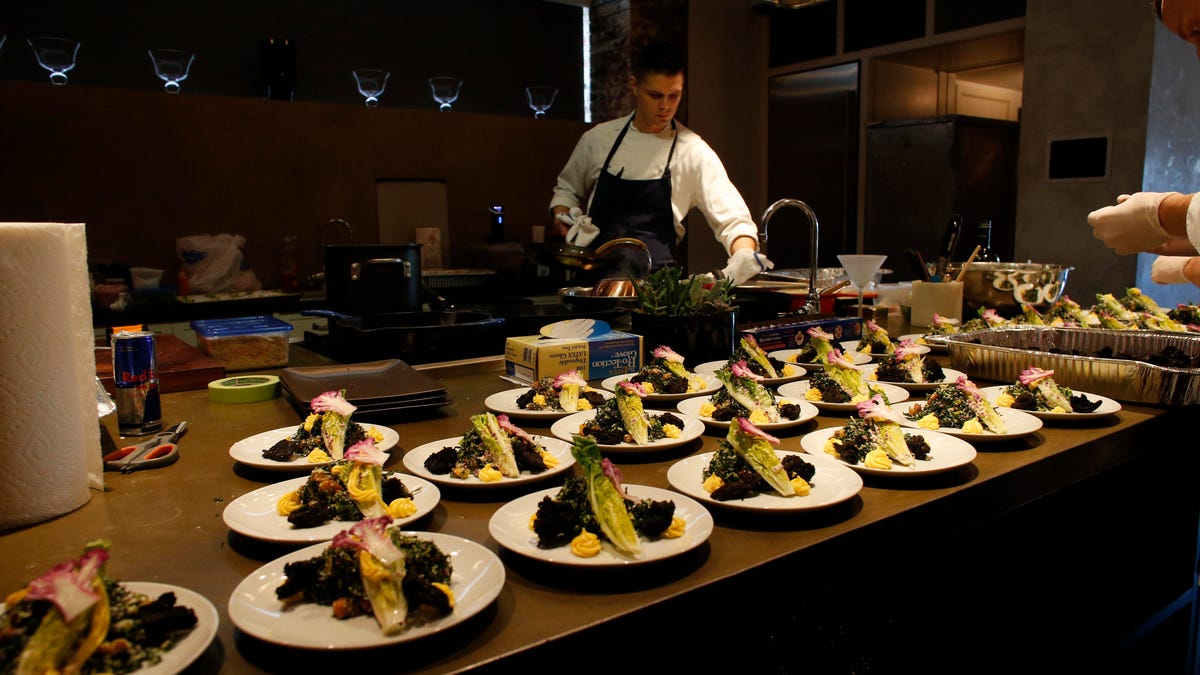When we go to Mars, here's what we might eat on the way
A mission to Mars may be a way off, but scientists are already cooking up the menu.

Nat Geo created Mars-inspired dishes for a luncheon in New York promoting its show, but it's unlikely astronauts would actually eat these exact creations.
Typically, I have a ham sandwich for lunch. A couple of weeks ago, I mixed things up and had waygu beef with a crater-shaped ball of spinach, a kale salad with meteor-shaped croutons and a 3D-printed piece of chocolate.
The delicacies were part of a Mars-inspired menu aimed at showing what astronauts might eat on the long journey to the Red Planet.
Yes, the food was fancy as heck, though I was assured it was nothing like food astronauts would eat on a mission to Mars. Still, ongoing research into cuisine for a journey there is pointing toward vittles that will go far beyond dull-looking paste squeezed out of a tube.
The New York luncheon, held as excitement ramped up for NASA's InSight Mars landing Monday, celebrated Nat Geo network's second season of Mars, which is part fictional drama about astronauts creating a new life on Mars and part documentary series focusing on the actual research going into a mission to Mars.
Michele Perchonok, a food scientist who previously worked at NASA for 17 years, said the space organization has been developing food that would need to last astronauts through a 34-month round-trip mission to the Red Planet and back.
"If food is not acceptable, [astronauts] may not eat as much," Perchonok said, a valid concern as astronauts need to eat in order to perform their jobs to their fullest. All food served in space needs to meet standards of being safe, nutritious and palatable. It also needs to have a 5- to 7-year shelf life, she said, which is much longer than the 18-month shelf life for food on the International Space Station.
"You can anticipate one of the menus could be pasta sauce made with tomatoes, bell peppers and onions," Perchonok said, noting that cherry tomatoes, potatoes and strawberries are potentially possible to bring using dwarf plants and a growth chamber.
Dr. Michele Perchonok is a food scientist who worked at NASA for 17 years.
Other foods that should be able to make the journey would be soybeans, oils, peanuts and similar staples.
While early in its development, 3D-printing could also be a boon to astronauts, Perchonok noted, with the possibility of ethnic dishes like curry being cooked up using the technology.
"Currently on the International Space Station they have Asian, Chinese food, some Indian food, vegetarian dishes, Mexican dishes -- there's already a lot. The question is how much variety do you need for a Mars mission," Perchonok said.
One thing Perchonok knows astronauts want on their missions: coffee. While attending a workshop during her NASA career, she had the opportunity to ask Apollo astronauts how important it was for them to have hot water, and they unequivocally let her know it's very, very important.
"Don't take away our coffee," they told her.
The second season of National Geographic's Mars is currently airing on the National Geographic channel Mondays at 9 p.m.
NASA turns 60: The space agency has taken humanity farther than anyone else, and it has plans to go further.
CNET's Holiday Gift Guide: The place to find the best tech gifts for 2018.

